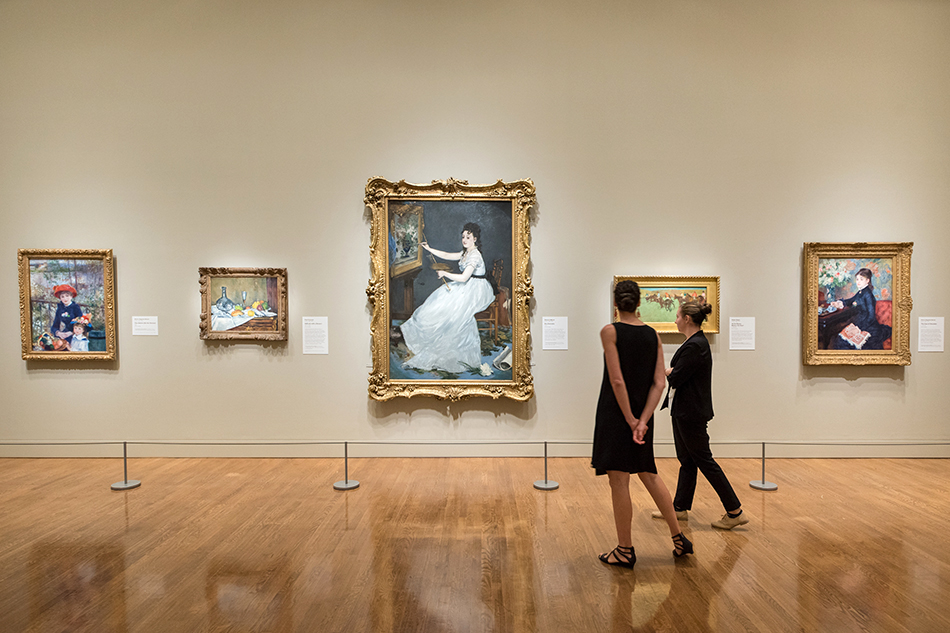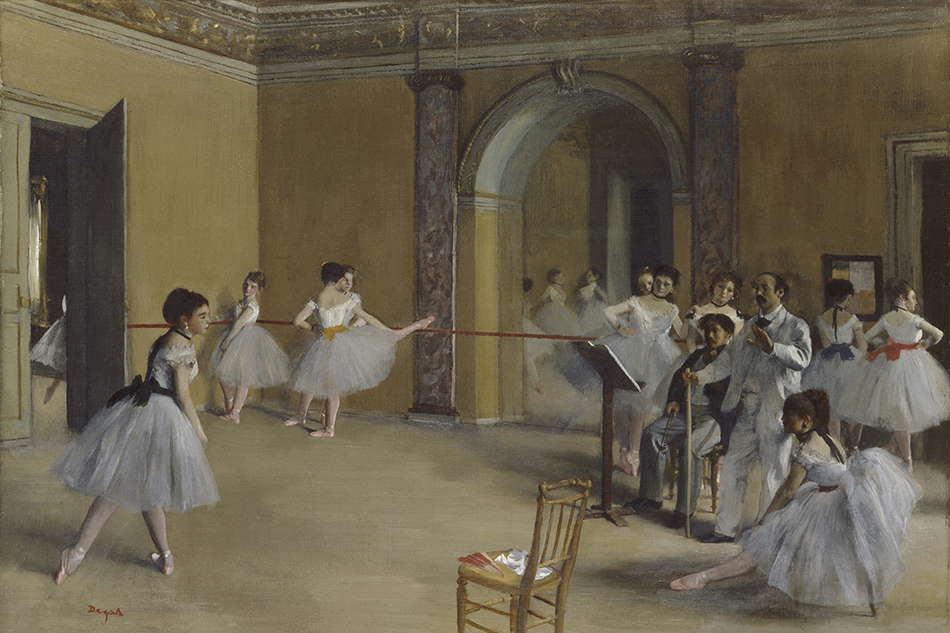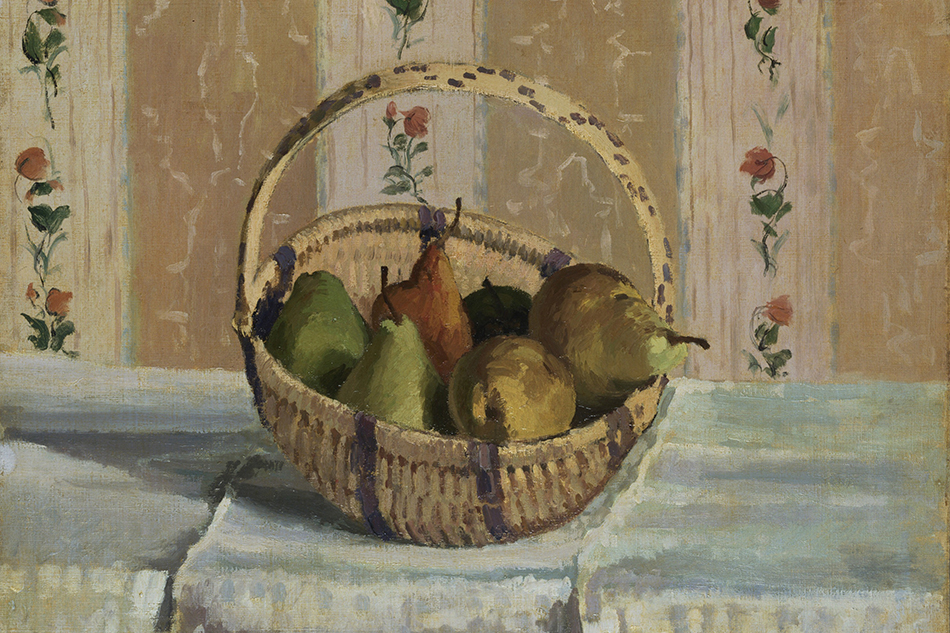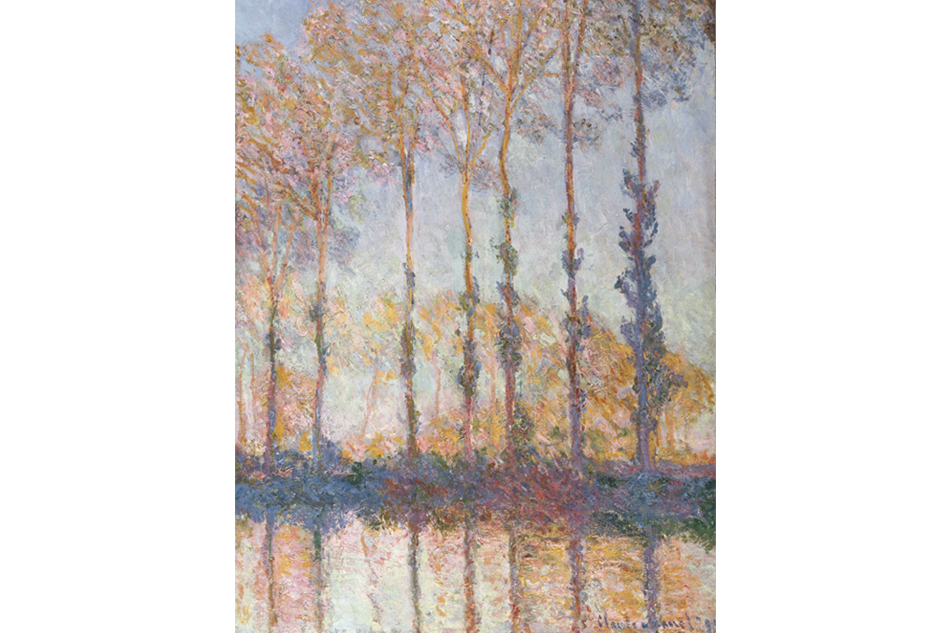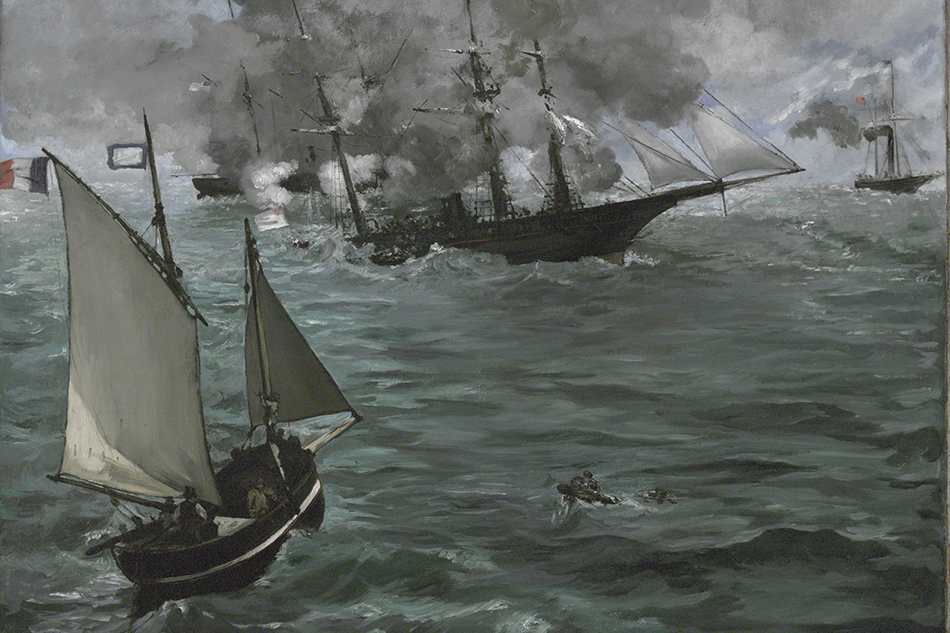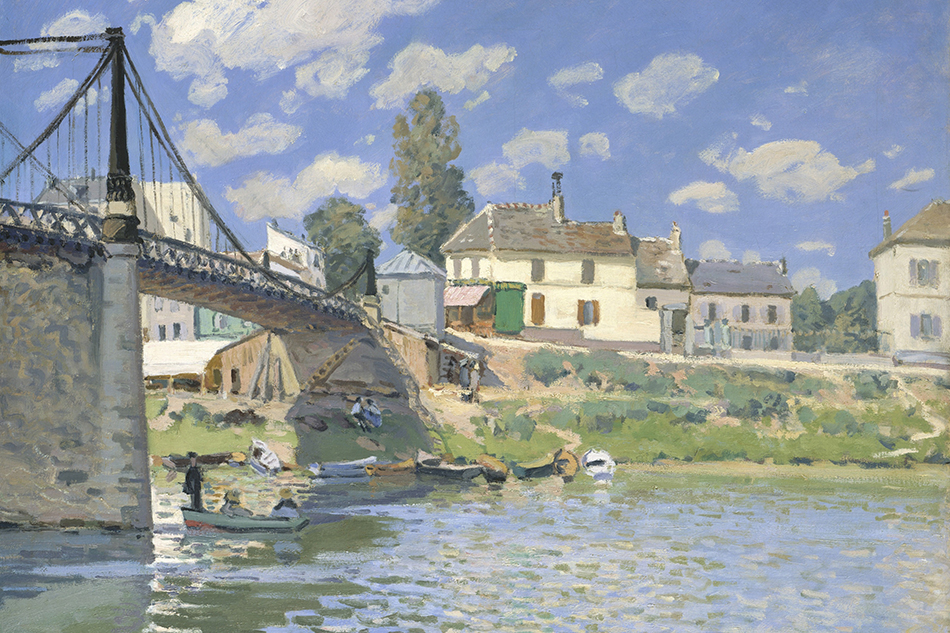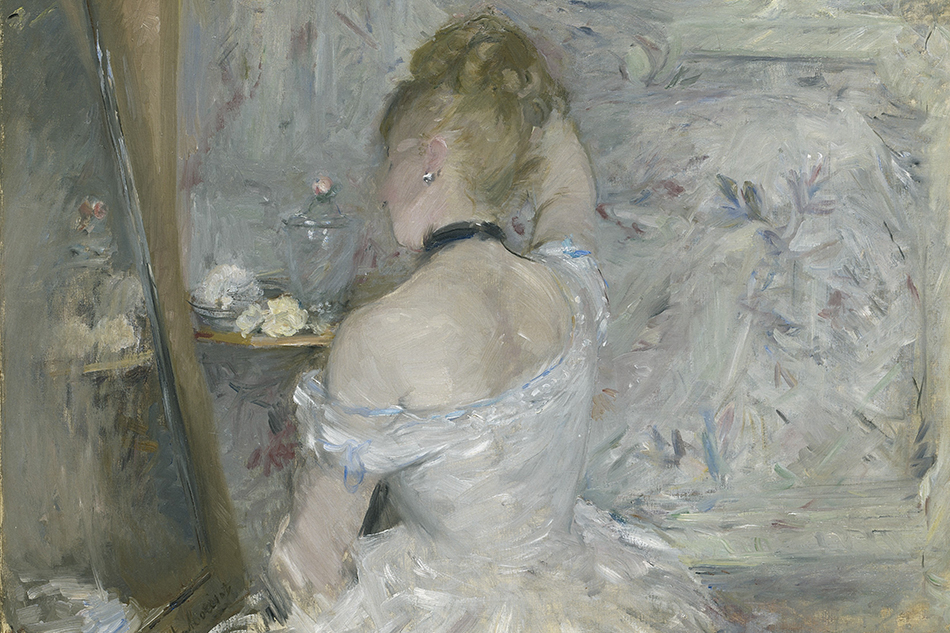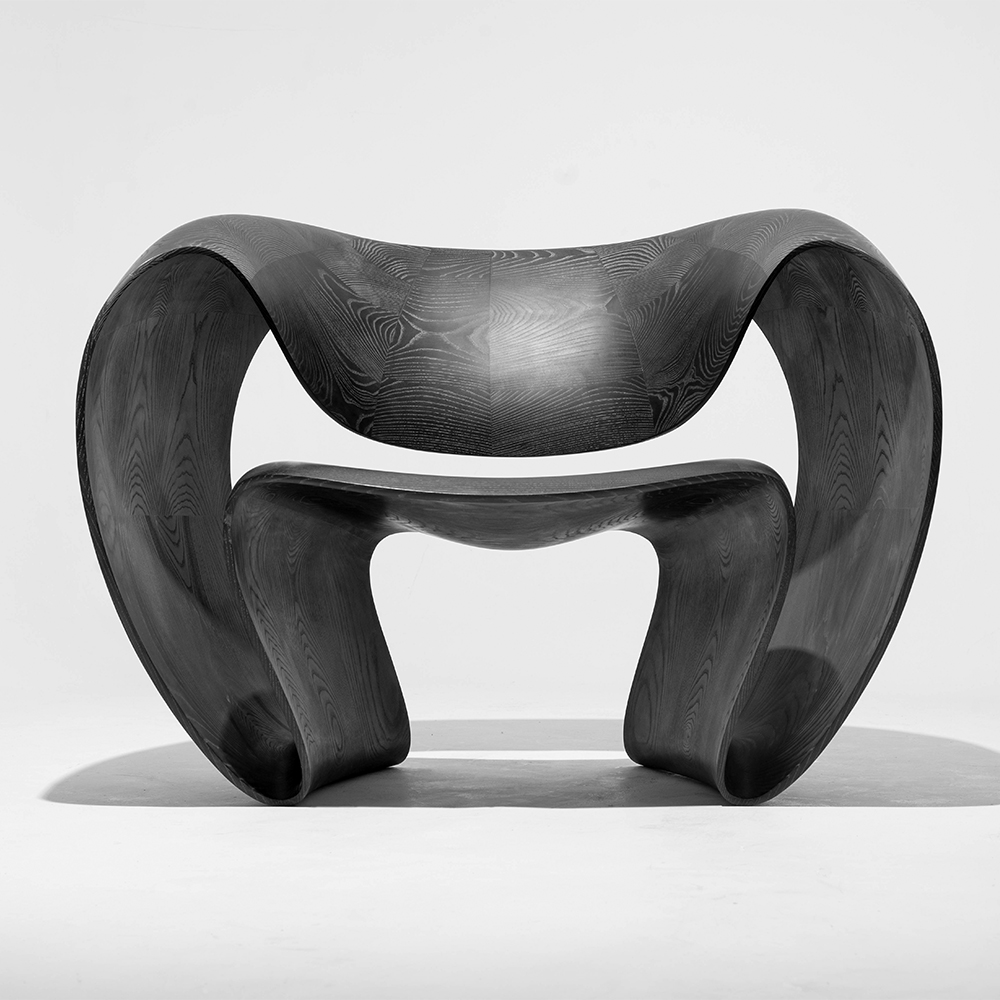
July 27, 2015Paul Durand-Ruel, the subject of a current show at the Philadelphia Museum of Art, poses in his gallery, in a photograph, circa 1910, taken by Dornac, famous for his portraits of Parisian artists and writers (photo © Durand-Ruel/Archives Durand-Ruel). Top: A detail of one of the great Impressionist works that passed through the dealer’s hands: Woman at Her Toilette, 1875–80, by Berthe Morisot (image © The Art Institute of Chicago).
It seems behind every great art movement there is an exceptional art dealer. Think of Post-Impressionism and Ambroise Vollard or Pop and Leo Castelli. The success of Impressionism was largely due to the intrepid zeal of the Paris-born dealer Paul Durand-Ruel. Or should one say survival? “Without Durand, we would have died of hunger, all of us Impressionists,” a grateful Claude Monet exclaimed shortly after the dealer’s death in 1922 at the age of 90.
An exhibition celebrating his brave achievement, “Discovering the Impressionists: Paul Durand-Ruel and the New Painting,” is now on view at the Philadelphia Museum of Art through September 13. It features scores of intoxicating canvases by Monet, Édouard Manet, Edgar Degas, Mary Cassatt and Pierre-Auguste Renoir, all beloved now, but in their own day savaged.
A man of conviction, who went to mass every morning, Durand-Ruel never wavered in his belief in his artists. He bought them in bulk. During his long life, he purchased approximately 1,000 Monets, 1,500 Renoirs, 200 Manets, 400 Degases and 800 Camille Pissarros. He once owned Eugène Delacroix’s epic Death of Sardanapalus, 1827, now in the Louvre, and Renoir’s Luncheon of the Boating Party, 1880-81, one of the treasures of the Phillips Collection, along with other masterpieces that ended up in the PMA, Metropolitan Museum of Art, National Gallery in London and Pushkin Museum in Moscow.

The American expat Mary Cassatt was among the many painters Durand-Ruel discovered. She focused on domestic scenes like The Child’s Bath, 1893. Image courtesy of The Art Institute of Chicago: Robert A. Waller Fund
In 1851, when he was just 20 years old, Durand-Ruel joined his ailing father at his family’s picture gallery near the Place Vendôme, which over the next 70 years he would transform into an artist-promoting powerhouse. He had a discerning eye, trusted his instincts and was not afraid to sit on stock — or even purchase it back. He introduced such now standard practices as operating his gallery in several cities (London, Brussels and New York), mounting solo shows, sending work to international exhibitions, organizing public lectures, publishing exhibition catalogs, backing art magazines and giving his artists stipends.
Durand-Ruel’s perspicacity and sagacity come alive on the walls of the PMA. You’ll find fresh, vibrant landscapes, still-lifes, and interiors by talents the dealer and his father championed: Barbizon artists such as Jean-Baptiste-Camille Corot and Theodore Rousseau, Romantic Delacroix and Realist Gustave Courbet. In a sense, these artists served as a marketing training ground for the fledgling dealer, and while they set the stage for the younger Impressionists, they were endorsed by the critics early on in their careers.
Of average height, Durand-Ruel had brown eyes, a bottlebrush moustache and bushy eyebrows that a French art critic described as being “serious and questioning even as they quiver with mischief.” Yet there was sadness in his life. His wife died in 1871 when she was just 30 and pregnant, leaving him with five young children to raise alone.

An admirer of Velasquez, Manet painted his stepson as a 17th-century Spanish page in Boy with a Sword, 1861. Image courtesy of The Metropolitan Museum of Art
During the Franco-Prussian War, Durand-Ruel sought safety for his family, as well as his pictures, in London, opening a gallery on New Bond Street. It was there that he met Monet and his friend Pissarro, both of whom had also recently fled their besieged city — and ended up buying everything the two young artists painted in England.
When he returned to Paris, Durand-Ruel continued his buying spree. Now his beneficiaries were, among others, Manet, Degas, Renoir, Alfred Sisley, and Berthe Morisot. At the PMA, a wall of spectacular Manets, including the incomparable Music in the Tuileries Gardens, 1862 — with its remarkable portraits and its symphony of creamy blacks, whites and greens — attests to the soundness of his vision. But his contemporaries didn’t agree: Many were offended by Manet’s loose, sketchy brushstrokes and his choice of modern Parisian life as a subject. “Having exhibited and [had the] daring to champion such works, I was treated as a madman and a person of bad faith,” Durand-Ruel once recalled. “Little by little, the trust I had succeeded in inspiring disappeared, and my best clients began to question me.” Facing financial ruin, he sold off his popularly prized Barbizon School holdings through an intermediary so his name would never be mentioned.
A few years later, things picked up when a bank offered Durand-Ruel credit. He again purchased work from the Impressionists. Then, not long after, the bank collapsed. The dealer sublet his apartment and borrowed money based on the value of the frames, not the paintings.

Renoir’s Dance at Bougival, 1883, is one of the masterworks that seduced Londoners in the famous show Durand-Ruel presented at the Grafton Galleries in 1905. Image courtesy of the Museum of Fine Arts, Boston
In 1885, American sponsors rescued Durand-Ruel with an invitation to exhibit his artists in New York. He set sail with 300 works, among them Manet’s Boy with a Sword, 1861; Morisot’s Woman at her Toilette, 1875–80; and Renoir’s Dance at Bougival, 1883, all now in the PMA exhibition. According to the dealer, that 1885 show “drew crowds of the curious, and unlike what happened in Paris, it triggered no fuss or stupid comments.”
Although this was not the first show of the Impressionists in the United States, it attracted so much press and public attention that Durand-Ruel opened a New York gallery. It would take another 20 years for the movement to truly catch on in Europe, and only then after the dealer mounted an epic exhibition with 315 paintings at the Grafton Galleries in London. Among the works from that exhibition included at the PMA are Pissarro’s Pont Boieldieu, Rainy Weather, 1896, which was shocking for its industrial imagery, and Degas’s Miss La La at the Cirque Fernando, 1879, a painting of a circus aerialist that was as astonishing in its perspective as it was scandalous in subject.
At last, in Philadelphia, Durand-Ruel is getting the credit he richly deserves for having put Impressionism on the map. We may be late to the party, but Renoir always knew this day would come. “Your love of art and your defense of living artists,” he presciently told Durand-Ruel in 1885, “will be your claim to fame.”

